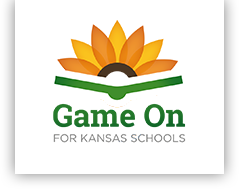August 28th, Governor Brownback’s office sent out an email indicating that there is nothing wrong with Kansas school funding, that editorial boards and union leaders are engaging in “bombastic talk” and spreading a “false narrative” that our schools “are starving due to lack of funding.” He then focused on new buildings (paid for with funding that can’t be used for classroom operations and at least partially funded by local bond issues), praises teachers and mentions raises in teacher pay for a few districts and technology roll-outs in others.
When discussing the block grants, the governor failed to mention that increased choices about how to allocate resources is combined with a functional cut in resources in light of increasing costs and growing enrollment, that none of the districts received all the funding they requested, that percentage discounts were applied to all the requests without determining the funding was unneeded, that the block grant funding was raised by deducting .4% from every district in the state and only about half of the funding has been given back to the schools and that although the former “broken” (we say “unfunded”) formula would not have immediately addressed the decreased property valuations, it would have addressed them in the following year whereas the block grants freeze funding for 2 years.
We agree that “Kansas students are back in classrooms prepared to learn” but we honestly disagree that they have all “the resources they need to teach them”. We don’t believe our schools are abysmal failure factories, but we are concerned that we see an erosion of support and leaders willingly ignoring the fact that districts do have unmet needs and that, under the block grants, that situation is likely to worsen. Here’s the text of the email:
Fellow Kansans,
Kansas children across the state returned to school this month. Editorial boards and union leaders would have you believe the schools are starving due to lack of funding. Reality shatters this false narrative.
Despite all of the bombastic talk, Kansas schools are well funded. Elementary students in Tonganoxie filled the halls of a new state-of-the-art facility featuring three music rooms, two gyms, an abundance of classrooms. High schoolers in Osage County will perform in a new fine arts facility this year, housing a theater to seat 500 audience members. Shawnee Mission broke ground this week on the first of six new buildings, and freshmen at Wichita’s Southeast High School will graduate in four years from a beautiful new high school.
The innovative spirit and passion of Kansas teachers make our schools among the best in the country. Their dedication deserves recognition. Along with others districts, Auburn-Washburn, Fairfield, and Topeka were each able to increase teacher pay. One-to-one technology initiatives are also helping teachers prepare our students for the 21st century workforce with ease—Girard with iPads and McPherson with Chromebooks.
Governor Brownback’s block grant funding that provided an historic $4 billion to Kansas schools gave districts the freedom to decide what investments would best serve their students. The block grant also established a new recourse of action for districts facing unexpected challenges. Just this week the State Finance Council, headed by Governor Brownback, gave more than $6 million in additional funding to districts statewide. Each of the 22 districts applying because of decreased property valuation (primarily resulting from lower oil and gas prices across the nation) received additional funding. Under the old, broken formula, districts would not have received immediate extra state funding. Thirteen districts applying due to enrollment increases also received immediate additional funding.
Kansas students are back in classrooms prepared to learn, and our districts have the resources they need to teach them.
Melika Willoughby
Deputy Communications Director
Office of Governor Sam Brownback
We note that the Shawnee Mission School District projects were financed without state aid by local bond issues. We also received the following comments on our Facebook page:
“Here’s the thing about the new Southeast High School that he fails to mention. It was never supposed to be Southeast. It was supposed to be a brand new high school according to the original bond issue. It was proposed to alleviate crowding and serve an expanding semi-suburban population. But after the bond issue passed, the Governor’s sweeping cuts made it to where we could no longer afford to hire personnel to staff a new school. We were already committed to building the structure, so the only viable choice was to move Southeast High School to the new building. This decision upset a lot of people because a depressed neighborhood is losing a school, many students will have a significant commute and the public feels like the school district lied to them. Don’t get me wrong; the building is going to be amazing and we are happy to be getting such a wonderful facility, but it didn’t at all play out like it was supposed to. Brownback including this in his story of how education is doing fine is laughable considering what a mess it’s been for all of us.”
“Those initatives he is bragging about were funded by the voters! The voters approved bond issues to get TPS students Chromebooks. 501 teachers did receive a raise–less than a $1000, and even less than that if you have been teaching the longest in our district (yes, you read that correctly). However, our health insurance went up 17%, if the final figures I heard are still accurate. I now pay three times what I used to pay. Just because districts budget to give the teachers a little more does not mean they have sufficient amounts. It just means that something else is suffering.”
“Agreed! It is more than 3x what we have been paying in the past for insurance. And I know I’m only receiving a $300 raise this year, so my raise doesn’t even come close to covering the extra expense in my health insurance.”
